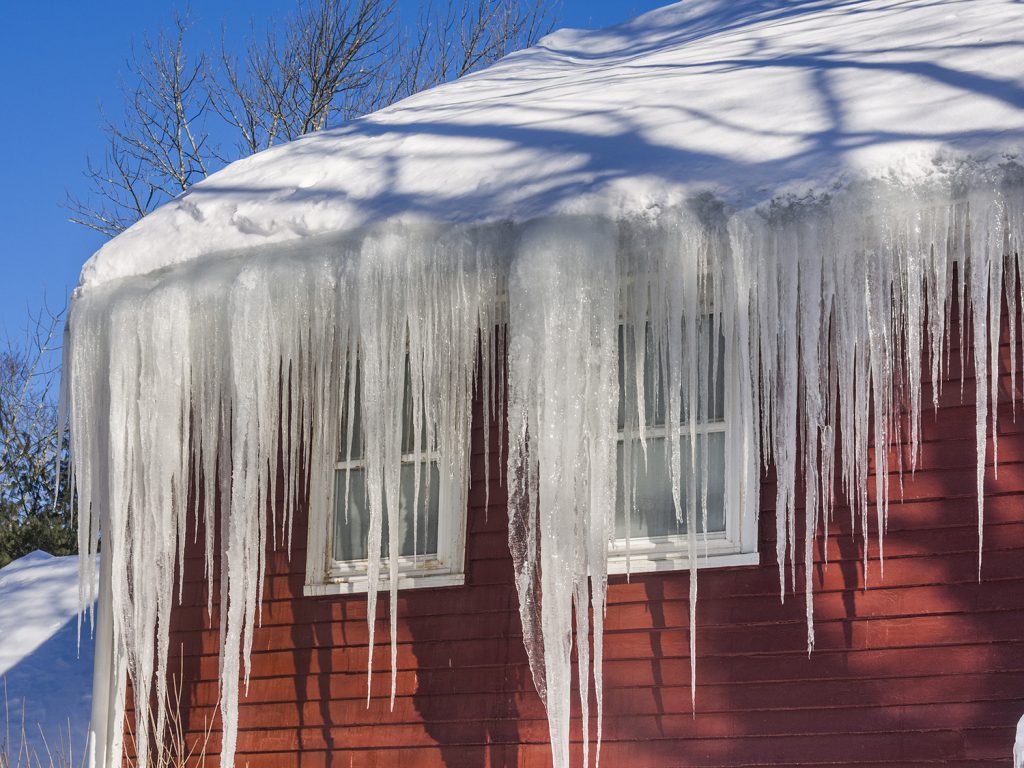
Icicles dangling from your home’s gutters may be a sign that problems are about to gush in.
Many people think of icicles as one of winter’s picturesque images. If your roof faces the south, you may even see icicles forming during the day as the sun melts the snow. Yet icicles elsewhere on the roof, or with significant ice buildup on the roof, can potentially lead to significant issues. Icicles can signal an ice dam, which occurs when melting snow or clogged gutters cause water to collect and freeze on the roof. Ice dams are typically a sign that water is collecting where it is not expected — and can be causing damage.
“My concern would be the level of insulation that they have up in the attic, or if they have air sealing issues,” said Steve Hite, energy services supervisor for Hendricks Power Cooperative. “When snow lands on the roof, you want that snow to melt at the top, outside. It’s the opposite when you see ice damming and icicles forming. You have the heat from the home escaping to the attic and melting the bottom of the snow, the part touching the shingles.”
Improper air sealing in the attic can cause issues, as leaks allow the warm air to move into the attic. A lack of attic insulation can let the home’s heated air escape and melt the snow on the roof.
Icicles can also form due to clogged gutters, which prevent water from draining as intended. As temperatures drop below freezing, the water that’s trapped in the gutters can freeze and form an ice dam. Over time, if snow accumulates in the gutters, melts, and then freezes again, it can cause the ice dam to get larger — and could potentially cause damage once the ice melts.
“Water damage is the big issue, because that water ends up getting trapped, and it’ll actually go up underneath shingles,” Hite said. “It can come all the way into the house and cause issues with your drywall and water damage as well.”
You can prevent the potential for water buildup by ensuring that your gutters are clean of debris. If you are concerned about possible issues in your attic, contact a qualified contractor to request a “blower door” test. This will determine where any air leakages are located so you can figure out how to best address any issues. You also can contact your local electric cooperative’s energy advisor with questions about your home’s energy use.



